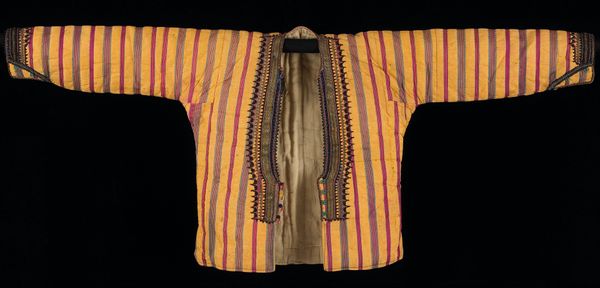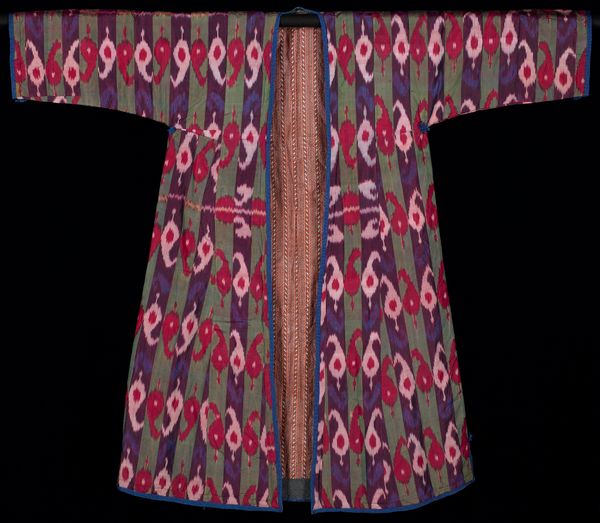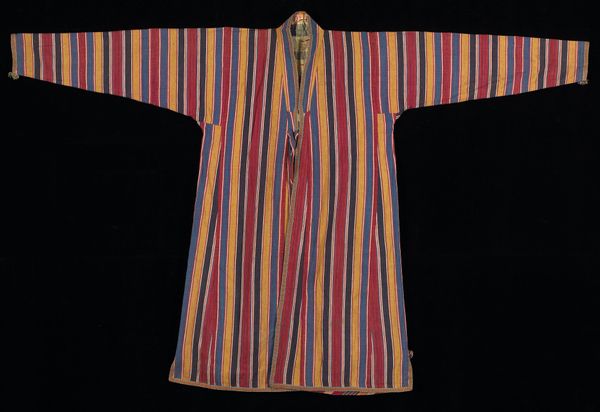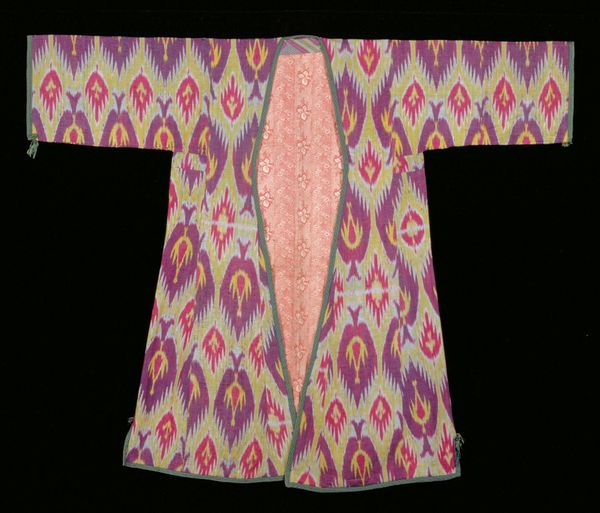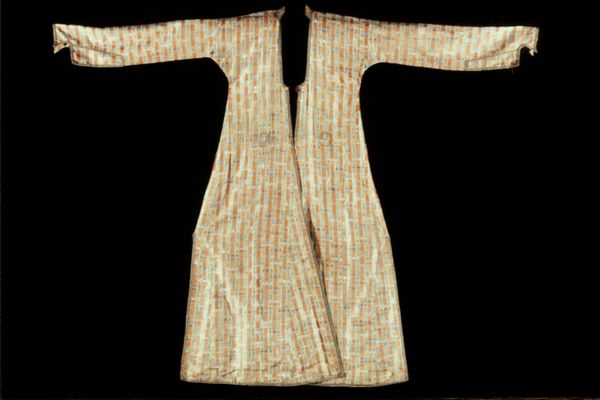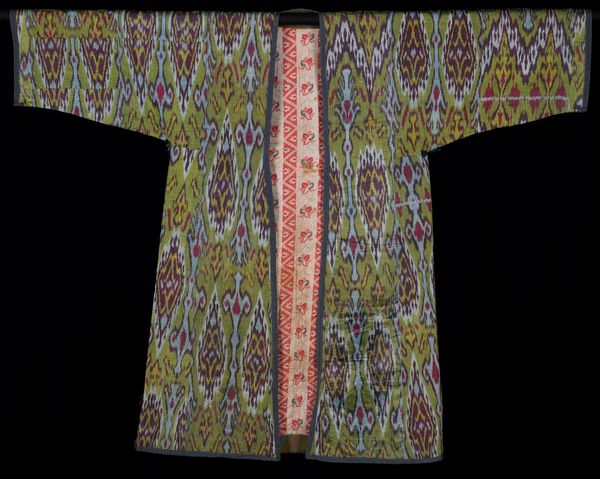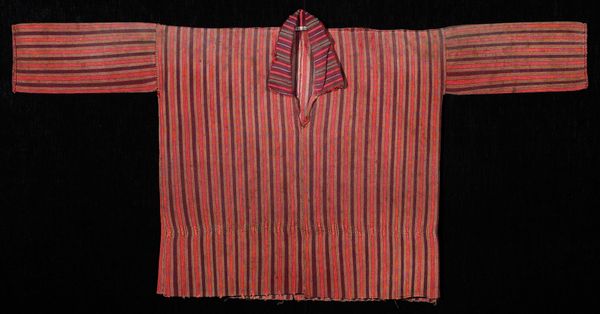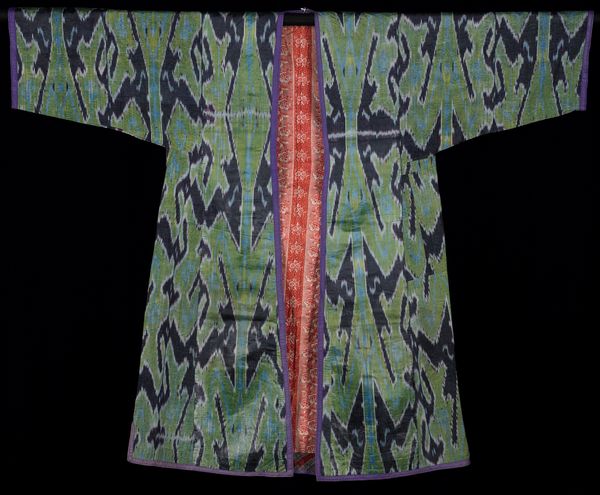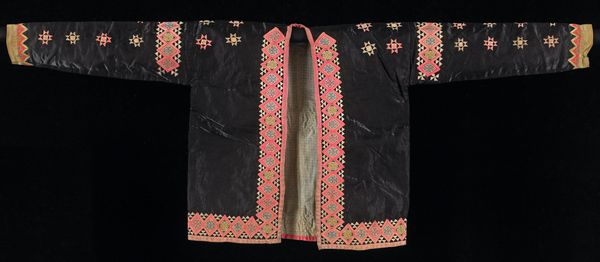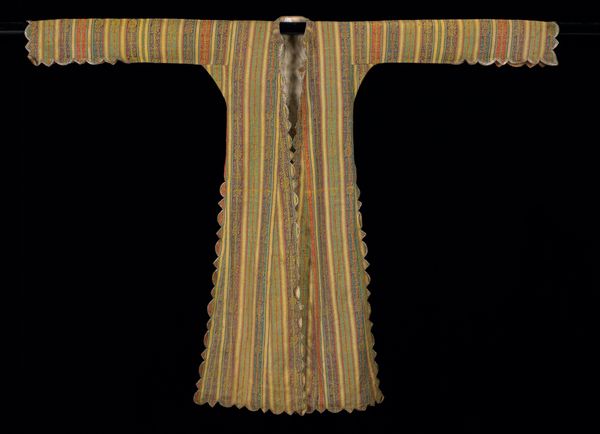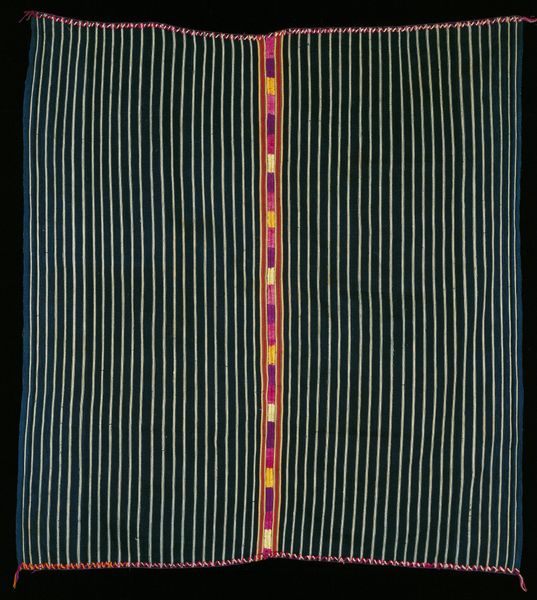
silk, textile, cotton
#
silk
#
textile
#
geometric pattern
#
geometric
#
cotton
#
textile design
Dimensions: 37 x 36 3/4 in. (94.0 x 93.3 cm)
Copyright: Public Domain
Editor: We're looking at a "Woman's ceremonial blouse (Huipil)" from around 1955, housed here at the Minneapolis Institute of Art. It's made from silk and cotton, a vibrant textile piece. What strikes me is how these intense geometric patterns create a sense of movement. What stories do you see woven into this huipil? Curator: This huipil is a fascinating example of how clothing acts as a carrier of cultural and historical narratives. The patterns aren't merely decorative. Each motif likely holds symbolic weight within its community. The design elements are so bold. Don't you think it demands the attention and acknowledgement of its wearer and viewers alike? Editor: Absolutely, there's an assertion of identity. Thinking about the garment as a cultural artifact, I wonder about the process of creation and the role of the weaver within the community. Curator: Exactly! These textiles were often community endeavors, with knowledge passed down through generations of women. And consider this blouse in relation to its original owner: what social rituals was she expected to participate in? How would this textile have distinguished her from other members of society? What is the political context of the garment's survival? The survival of a piece such as this may tell of social hierarchies, trade agreements, cultural shifts, and sometimes oppression and war. Editor: So, looking beyond aesthetics, this blouse is essentially a visual archive of cultural identity, skill, and social dynamics. I had only considered surface-level details, but can see now that the surface is only an invitation to dig deeper. Thank you for expanding my perspective. Curator: Precisely! It is a powerful lesson of looking at what is in front of our faces to uncover stories. I appreciate your openness to looking deeper!
Comments
minneapolisinstituteofart almost 2 years ago
⋮
In parts of Guatemala, highly decorative blouses like this one were worn over the skirt and without a belt for celebratory occasions such as a wedding. This elaborately patterned woman's blouse (huipil) was constructed from three separately woven four selvedge panels. It took a great deal of time and considerable skill to make. In a society where weaving skills are highly valued, such as highland Guatemala, this blouse would be very much admired and appreciated by all who saw it and would have special significance for the woman wearing it.
Join the conversation
Join millions of artists and users on Artera today and experience the ultimate creative platform.
